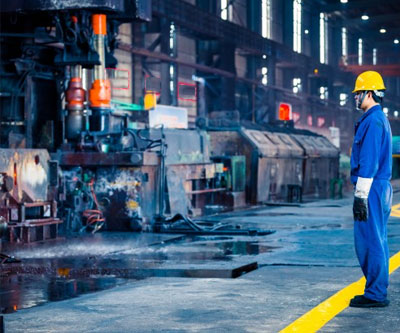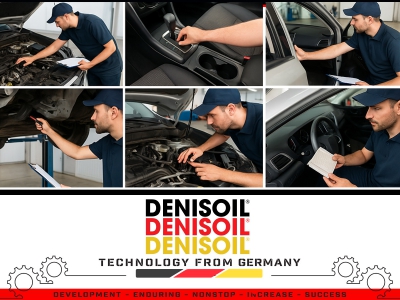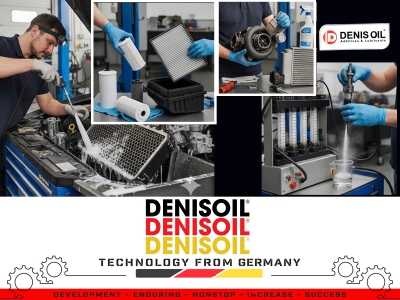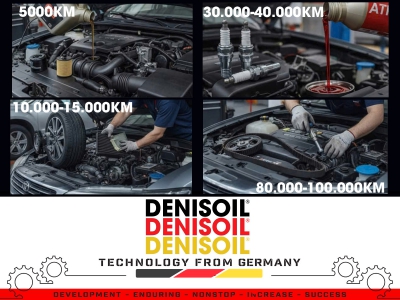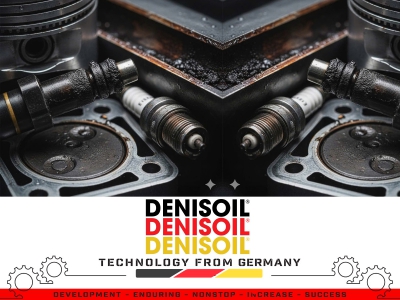1. Microbial Contamination
- Mechanism:
- Aerobic and anaerobic bacteria (especially Sulfate Reducing Bacteria – SRB) decompose emulsifiers, esters, and lubricating additives in the fluid.
- Generate H₂S (rotten egg odor), NH₃, and organic acids (butyric, propionic, lactic).
- Molds and algae grow when exposed to light and organic matter.
- Consequences:
- pH decreases (< 8.5), fluid turns dark brown or greenish.
- Biofilm forms on sump walls and piping.
- Fluid degrades quickly, causing foul odor, corrosion, and skin irritation to operators.
2. Tramp Oil Contamination
- Sources: way lube oil, hydraulic oil, gear oil, machine lubricants.
- Mechanism:
- Forms a free oil layer on the surface → blocks oxygen dissolution → anaerobic conditions → microbial growth.
- Esters and fatty acids in way lube oil serve as nutrients for microbes.
- Causes errors in refractometer readings (false high Brix).
- Consequences:
- Fluid changes color from pale yellow → light brown → dark brown.
- Stable foam, oil scum, and foul odor appear.
- Biocide consumption accelerates, emulsion destabilizes.
3. Poor Maintenance
- No sump or piping cleaning before refilling → residual microbes and dirt remain.
- No filtration of chips, sludge, or dust → accumulate as nutrients.
- Long intervals between changes or topping up with water only → concentration too low, additives insufficient.
- Dead zones in the sump without circulation → breeding ground for anaerobes.
- Consequence: fluids turn foul quickly even after replacement, unpleasant odor spreads across the shop.
4. Adverse Operating & Environmental Conditions
- High temperature: fluid heats up to 35–40 °C → microbial growth rate multiplies.
- Poor ventilation: dissolved oxygen low → anaerobic growth.
- Light exposure in the sump: promotes algae growth → fluid turns greenish, fishy odor.
5. Poor Water Quality
- Excessive hardness (>150 ppm CaCO₃): Ca²⁺, Mg²⁺ react with emulsifiers → soap scum, emulsion break.
- Too soft water (<50 ppm CaCO₃): foam formation, unstable pH.
- High chloride (Cl⁻) or sulfate (SO₄²⁻): corrosion, microbial growth.
- Water already contaminated with microbes: introduces bacteria during mixing.
6. Improper Concentration & pH
- Too low concentration (<3–4%): insufficient corrosion inhibitors and biocides → fluid deteriorates, foul odor.
- Too high concentration (>12%) with tramp oil → unstable emulsion, still foul odor.
- Low pH (<8.5): microbial acids → favorable for bacterial growth → rapid spoilage.
- Excessively high pH (>9.8): causes skin irritation, still prone to microbial issues if tramp oil present.
7. Insufficient Biocide/Inhibitor
- Fluids with little or no biocide.
- Biocide consumed during use but not replenished → microbial outbreak.
- No preventive dosing program → fluids foul faster.
Technical Summary
Main causes of foul odor:
- Excessive microbial growth (due to low pH, abundant nutrients).
- Tramp oil contamination → anaerobic conditions.
- Poor sump and fluid management (residues, chips, dead zones).
- Environmental factors (heat, light, low oxygen).
- Poor water quality.
- Uncontrolled concentration and pH.
- Lack or depletion of biocides.
 Tiếng Việt
Tiếng Việt
 Chinese
Chinese
 English
English


